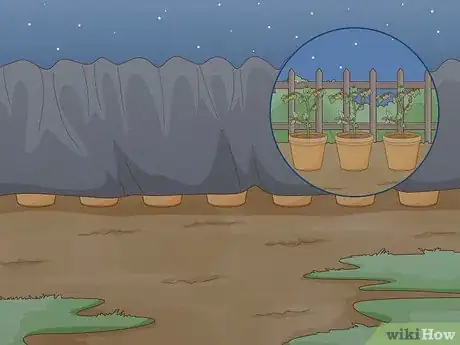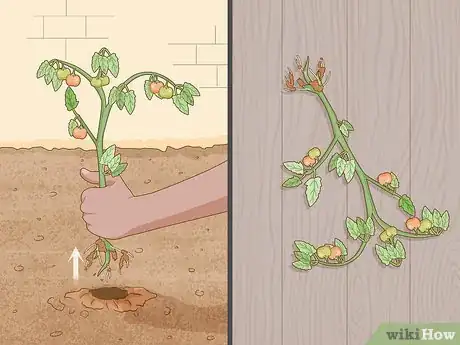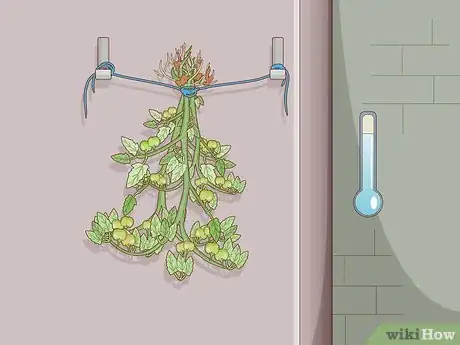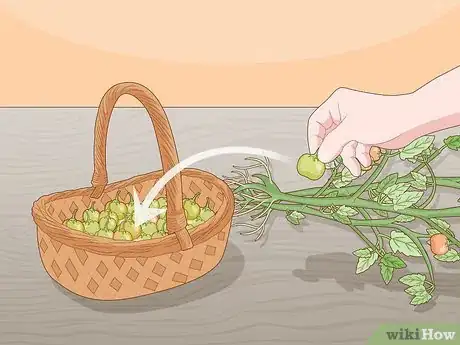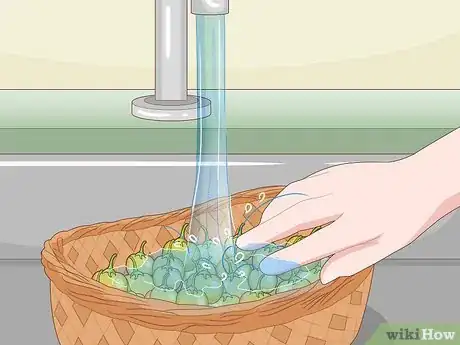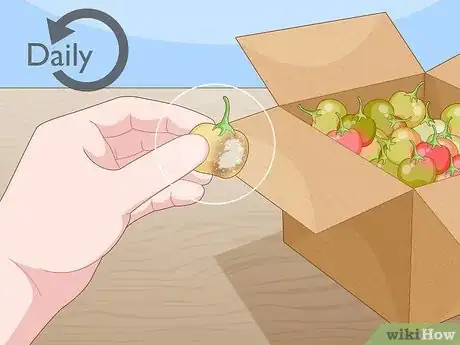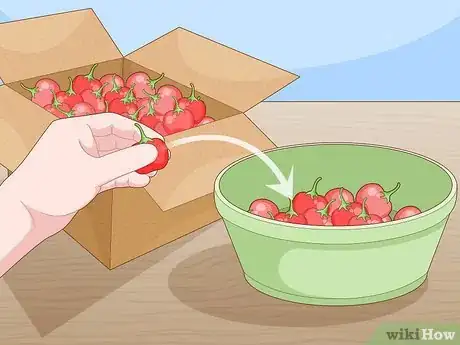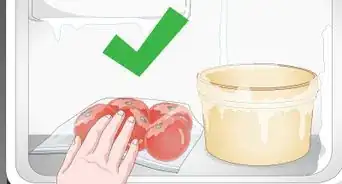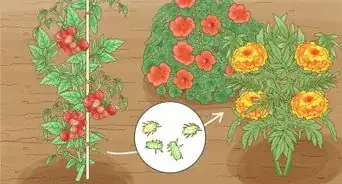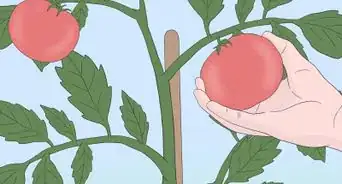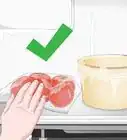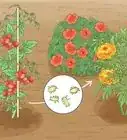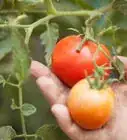This article was co-authored by Jerran Boyer. Chef Jerran Boyer is a Nutrition-Focused Professional Chef and the CEO of Health Nut Chefs. Chef Jerran has over 20 years of experience as a private chef. She and her team specialize in providing healthy, fresh-prepared meals designed with each client’s taste and dietary needs in mind. She and her team offer both personal, part-time chef services and private, full-time chef services in New York, New Jersey, and the Los Angeles area. Chef Jerran received her BS in Business Administration from the University of South Florida, a degree in Culinary Arts from Florida Culinary Institute, and a Plant-Based Nutrition Certificate through Cornell University.
wikiHow marks an article as reader-approved once it receives enough positive feedback. This article received 14 testimonials and 100% of readers who voted found it helpful, earning it our reader-approved status.
This article has been viewed 1,601,023 times.
As the end of the growing season approaches, you may be left with some tomatoes that still aren't ripe. But don't worry, these plants aren't all lost! You can still take some steps to ripen the tomatoes and enjoy them after the season ends. If your plants are potted, simply move them indoors to complete the ripening process. Otherwise, pick the tomatoes and place them in a bag or box. This concentrates ethylene, which makes plants ripen. Alternatively, for a better taste, pull up the whole tomato plant and suspend it upside down until the fruits ripen.
Steps
Ripening Tomatoes on the Vine
-
1Move potted plants inside and leave them in direct sunlight. Tomatoes stop ripening when the temperature gets cold. If the weather is getting cold and your tomato plants are potted, then finishing off the ripening process is easy. Just pick up your plants and move them inside where it’s warmer. Leave them near a window in direct sunlight. The warmer temperature and sunlight help the tomatoes continue ripening. Then pick tomatoes as they ripen and turn red.[1]
- Tomato plants grow best when the temperature is around 70 °F (21 °C), so make sure your home temperature is near that.
-
2Cover outdoor plants at night with blankets or row covers. If your tomato plants aren’t potted and the season is ending, then you have to pick them or cover them until they ripen. Using a blanket or row cover helps ripen your plants in the last few days before the weather gets cold. Cover the entire tomato plant and make sure no parts are sticking out. Then check them every day and pick the ripe ones.[2]
- Row covers are a better choice for this method because they’re designed to keep plants warm. Buy them at garden stores or online.
- Take the covering off during the day so the plants get sunlight.
- This method also works if there is an unexpected early frost, but the weather is supposed to warm up afterward.
Advertisement -
3Pull up the entire tomato plant, including its roots, and move it inside. If the weather has turned and your tomatoes still aren't ripe, dig up the entire plant and let it continue ripening inside. Start by digging around the plant roots with a gardening shovel. Then work the plant out of the ground, roots and all.[3]
- Shake off all the dirt and debris from the plant so it doesn’t make a mess in your home.
- If any tomatoes fall off while you’re pulling the plant up, ripen them in a bag or box.
-
4Hang the tomato plant in a cool basement or cellar. These locations have a better environment for ripening tomatoes when they’re still on the vine. There are several ways to hang the plants upside down. Use one that works best for you. Continue monitoring the tomatoes and pick them as they ripen.[4]
- For the simplest solution, tie a string to a nail in your ceiling rafter. Then tie the string around the base of the plant and leave it hanging upside down.
- You can also punch a hole in the bottom of a bucket. Then tuck the plant through that hole and suspend the bucket from the ceiling.
- Place a sheet or pan beneath the plant to catch any falling dirt and leaves.
Storing Tomatoes in a Bag or Box
-
1Pick the tomatoes if they aren’t ripe yet when the season ends. If the weather has gotten cold but you still have green tomatoes, then you’ll have to finish the ripening process indoors. Pick each tomato and be careful not to bruise or crush any. Inspect them and dispose of any damaged ones. They won't ripen properly.[5]
- Leave the stem attached on all the tomatoes you pick. This helps them ripen better.
-
2Wash and dry the tomatoes after picking them. Before you start the ripening process, wash each tomato thoroughly. This removes any bugs or mold spores that could damage the tomato during the ripening process. Run each tomato under cool, running water. Then dry it with a towel.[6]
- Make sure the tomatoes are dry because mold grows best in moist environments.
-
3Place the tomatoes in a paper bag or cardboard box. The specific container depends on how many tomatoes you have. If you only have a few, then use a paper bag. If you have a full vine or more, use a cardboard box with more room. Arrange the tomatoes so they don’t touch each other.[7]
- If you have a lot of tomatoes to ripen, use multiple boxes or bags. Too many tomatoes in one place will eat up all the ethylene, the chemical that makes plants ripen.
-
4Add a banana with green ends to the bag or box. Bananas naturally produce ethylene, the chemical that makes plants ripen. While tomatoes produce the chemical on their own, bananas produce much more, and boost the ripening process. Introduce a banana to aid the tomatoes.[8]
- Use a banana that is still slightly underripe and still has green ends. A brown banana won’t produce anymore ethylene.
- If you place the tomatoes in multiple containers, add a banana to each one.
-
5Seal the bag or box. Tomatoes need an ethylene-rich environment to ripen properly, so seal the container you’re using. This traps the ethylene and helps your tomatoes absorb as much as they can. If you’re using a paper bag, roll the top down. If you’re using a box, close the top and use a strip of tape to hold it closed.[9]
- Don’t make the container airtight or too tight to open. You’ll still have to check every day for signs of rotting, bruising, or mold growth, so make sure you can open the container easily.
-
6Check the tomatoes daily for mold or rotting. Open the container each day and check each tomato. Look for dark brown or black spots on its skin, which indicate that the tomato is starting to rot. Also look for growths on the tomato from mold. Remove tomatoes with these signs and dispose of them.[10]
-
7Remove the tomatoes when they ripen. When the tomatoes turn red, they’re ripe and ready to use. Pick out the ripe ones and enjoy![11]
- In warmer environments, around 65–70 °F (18–21 °C), the ripening process takes 1-2 weeks. In cooler environments, the process takes closer to a month.
- Use the ripe tomatoes within a week of removing them for optimal taste and freshness. If you won’t use them right away, place them on a windowsill in direct sunlight.
Community Q&A
-
QuestionCan I wrap each tomato in newspaper and put them in a box?
 wikiHow Staff EditorThis answer was written by one of our trained team of researchers who validated it for accuracy and comprehensiveness.
wikiHow Staff EditorThis answer was written by one of our trained team of researchers who validated it for accuracy and comprehensiveness.
Staff Answer wikiHow Staff EditorStaff AnswerYes, you can wrap each tomato in newspaper to assist ripening. Leave a little bit open at the top, to avoid molding if there is some moisture present. Arrange in a single layer in a box to prevent squashing. To check the ripening, open one every day or so to check how the process is going and re-wrap if the tomato isn't yet ripe. Keep the box in a warm and dry place.
wikiHow Staff EditorStaff AnswerYes, you can wrap each tomato in newspaper to assist ripening. Leave a little bit open at the top, to avoid molding if there is some moisture present. Arrange in a single layer in a box to prevent squashing. To check the ripening, open one every day or so to check how the process is going and re-wrap if the tomato isn't yet ripe. Keep the box in a warm and dry place. -
QuestionI've read you can a red apple to help ripen green tomatoes?
 wikiHow Staff EditorThis answer was written by one of our trained team of researchers who validated it for accuracy and comprehensiveness.
wikiHow Staff EditorThis answer was written by one of our trained team of researchers who validated it for accuracy and comprehensiveness.
Staff Answer wikiHow Staff EditorStaff AnswerYes, placing a red apple with green tomatoes can be helpful provided the green tomatoes have already shown signs of ripening (check the blossom end or bottom of the tomato for slight orange or red coloration). The apple releases ethylene gas, which helps to ripen the tomatoes faster.
wikiHow Staff EditorStaff AnswerYes, placing a red apple with green tomatoes can be helpful provided the green tomatoes have already shown signs of ripening (check the blossom end or bottom of the tomato for slight orange or red coloration). The apple releases ethylene gas, which helps to ripen the tomatoes faster. -
QuestionDoes a vine-ripened tomato have more sugar content than if picked green and ripened in the kitchen?
 wikiHow Staff EditorThis answer was written by one of our trained team of researchers who validated it for accuracy and comprehensiveness.
wikiHow Staff EditorThis answer was written by one of our trained team of researchers who validated it for accuracy and comprehensiveness.
Staff Answer wikiHow Staff EditorStaff AnswerThis is likely the case if the green tomatoes were picked just as they were beginning to ripen but before the "breaker stage," when the tomato is half green and half pink/orange. Once the tomato reaches the breaker stage, it seals itself off from the vine stem and from this point on, the tomato can be picked and ripened indoors with little flavor loss. Tomatoes taste better when left on the vine to ripen up to at least this stage but the reality is that any homegrown tomato is likely to taste better than many commercially grown tomatoes that have traveled far and sat around awaiting purchase!
wikiHow Staff EditorStaff AnswerThis is likely the case if the green tomatoes were picked just as they were beginning to ripen but before the "breaker stage," when the tomato is half green and half pink/orange. Once the tomato reaches the breaker stage, it seals itself off from the vine stem and from this point on, the tomato can be picked and ripened indoors with little flavor loss. Tomatoes taste better when left on the vine to ripen up to at least this stage but the reality is that any homegrown tomato is likely to taste better than many commercially grown tomatoes that have traveled far and sat around awaiting purchase!
References
- ↑ https://www.hgtv.com/outdoors/flowers-and-plants/vegetables/how-to-ripen-green-tomatoes
- ↑ https://www.hgtv.com/outdoors/flowers-and-plants/vegetables/how-to-ripen-green-tomatoes
- ↑ https://www.farmersalmanac.com/ripen-green-tomatoes-home-28846
- ↑ https://www.growveg.com/guides/the-best-ways-to-ripen-green-tomatoes/
- ↑ https://www.farmersalmanac.com/ripen-green-tomatoes-home-28846
- ↑ https://www.farmersalmanac.com/ripen-green-tomatoes-home-28846
- ↑ https://www.farmersalmanac.com/ripen-green-tomatoes-home-28846
- ↑ https://www.hgtv.com/outdoors/flowers-and-plants/vegetables/how-to-ripen-green-tomatoes
- ↑ https://www.farmersalmanac.com/ripen-green-tomatoes-home-28846
About This Article
To ripen green tomatoes, start by poking a few holes in a plastic bag and putting your tomatoes inside of it. Then, add a banana to the bag, which will release ethylene gas that helps fruit ripen faster. Once your tomatoes are bagged, store them in a warm area away from direct sunlight until they're ripe. If you have too many tomatoes to fit in a plastic bag, seal them in a cardboard box with a banana instead while you wait for them to ripen. To learn how to ripen green tomatoes in a jar, read on!

